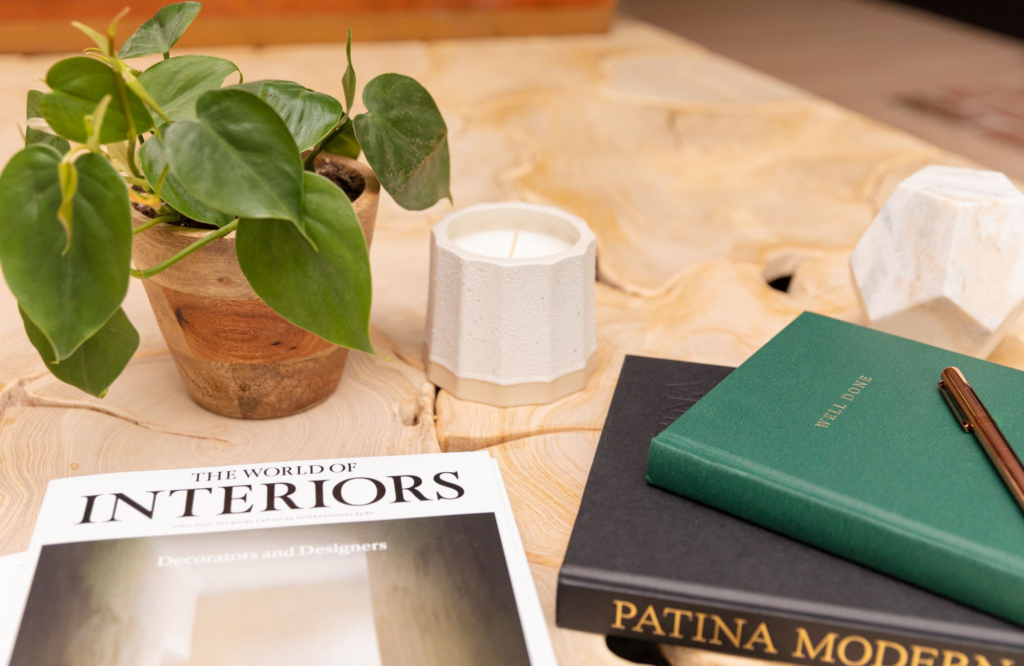How to Select the Right Words to Convey Your Brand

Here is a perfect example of the power of word choice… In English, we say “all you can eat” when referring to a serve-yourself, endless buffet. In French, however, they use the term à discretion, which loosely translates to “at your discretion.”
What a change in approach, right?!
The American version feels like this: “All I can eat? Challenge accepted!” The French version feels like more of an invitation to moderate oneself. “At my discretion? Am I still hungry? Maybe…” (And we’re willing to bet the American buffet vendors are restocking a bit more often than their French counterparts!)
The power of such simple word choice applies to our industry, too. How would your potential client perceive “design firm” differently than “design studio?” Or “custom window treatments” versus “hand-sewn drapery?”
Nearly every word we use in our lives and for our businesses has underlying meanings and implications that we all connect to that word… without even thinking about it.
Why is this important?

If you harness the underlying meanings of words to choose the BEST ones for your goals, you can strategically control the way your ideal client, vendors, and partners view you. THIS is brand messaging.

It’s the language that you apply to every written and verbal aspect of your business: your website, your client materials and emails, your social presence, even the words you use in-person as a team or with clients and partners. (And whether your brand messaging is intentional or not, you’re already doing it.)
So, how can you pick the best words for your website and brand?

Step 1: Start with Your Brand Pillars & A Word List
In a previous post, we mentioned the importance of defining your firm’s core values and brand pillars. If you’ve ever summarized your brand in 3-5 words, these are your brand pillars, and the language you use should always align with them.
Once you have your brand pillars set, write down as many supportive words as you can think of. (Don’t judge the merit of these words just yet.)
We’ll give you an example. If “Empathy” is one of your brand pillars, some words that support empathy in your projects and client service could include:
- Warmth
- Layered
- Thoughtful
- Intentional
- Collaborative
- Cocooning
- Listening
- Compassion
- Etc.
Do this for each of your brand pillars until you have a large word bank. P.S. This resource will help!

Step 2: Consider the Connotations of Each Word
As we mentioned before, every word is layered in meaning. Changing a single word in a sentence can impact whether it feels formal, casual, playful, fun, cheeky, compassionate, exclusive, etc. For example, what differences do you hear in the following sentences?
- Let’s design the perfect home for your children.
- Let’s design the perfect home for your kids.
- Let’s design the perfect home for your kiddos.
- Let’s design the perfect home for your little ones.
Did you notice that…
- Children = More formal
- Kids = More casual
- Kiddos = Fun and friendly
- Little ones = Heartfelt
Now, it’s your turn. For each word on your list, think about how it makes you feel and how it would make your ideal client feel. If it misses the mark, scratch it off your list. If you’re not sure, ask your team members or start using some contenders in client conversations to see how they land.
In the end, we recommend having a solid list of 6-10 words for each pillar, words that you can now infuse into your copy with impactful effect.

Step 3: Remember That You Can Always Get More Specific
When it comes to word choice, especially when speaking to your ideal client, specificity is your friend. Specificity is the difference between saying…
…that special cellar for your wine.
…that special cellar for your Cabernet.
…that special cellar for your collection of Napa Valley reds.
The reader just went from wanting a wine cellar, to loving Cabernet, to actually collecting wines from a famous region. These are three very different people. This is why knowing your ideal client is SO important. When you use your brand words in sentences, always give it one final pass-through to see if you can get more specific. A little goes a long way.

Secret Tip: Where to Place Your Brand Words
This tip is a subtle writer’s trick that we like to call weighting your sentences. You see, when the human brain reads a sentence (especially if we’re in the 99% who skim), we’re most likely to remember what we read at the END. Interesting, right? Yep, that’s where you can put your brand words for the most impact. Here are some examples:
For a brand focused on the feeling of home…
GOOD: You’ve just moved into your dream house — quaint shutters, spacious kitchen, stone fireplace — but it doesn’t feel like home yet.
BETTER: You’ve just moved into your dream house — quaint shutters, spacious kitchen, stone fireplace — but it still doesn’t feel like home.
For a brand focused on inspiring someone’s best life…
GOOD: A beautiful home is more than walls and furniture. It’s an environment that inspires and supports the lifestyle you want most.
BETTER: A beautiful home is more than walls and furniture. It’s an environment that inspires and supports your most beautiful lifestyle.
For a brand focused on restful spaces…
GOOD: After a long workday and a houseful of kids, you want a home that will relax, restore, and revive you.
BETTER: After a long workday and a houseful of kids, you want a home that manifests your deepest state of relaxation.

Now, it’s your turn — good luck! And as always, if you need some help, brand copywriting is what we do.
WORKBOOKS & DOWNLOADS
A-to-Z LIST OF LUXURY WORDS
GUIDE TO BRAND MESSAGING
START BLOGGING FOR SEO
Printable Workbook
Our Go-To Lexicon!
Guide + Checklist